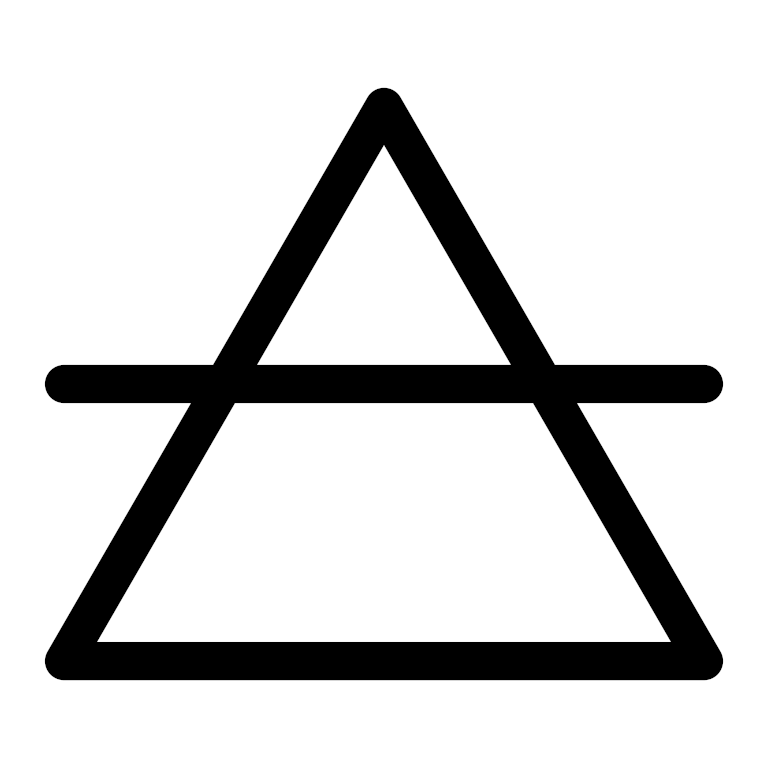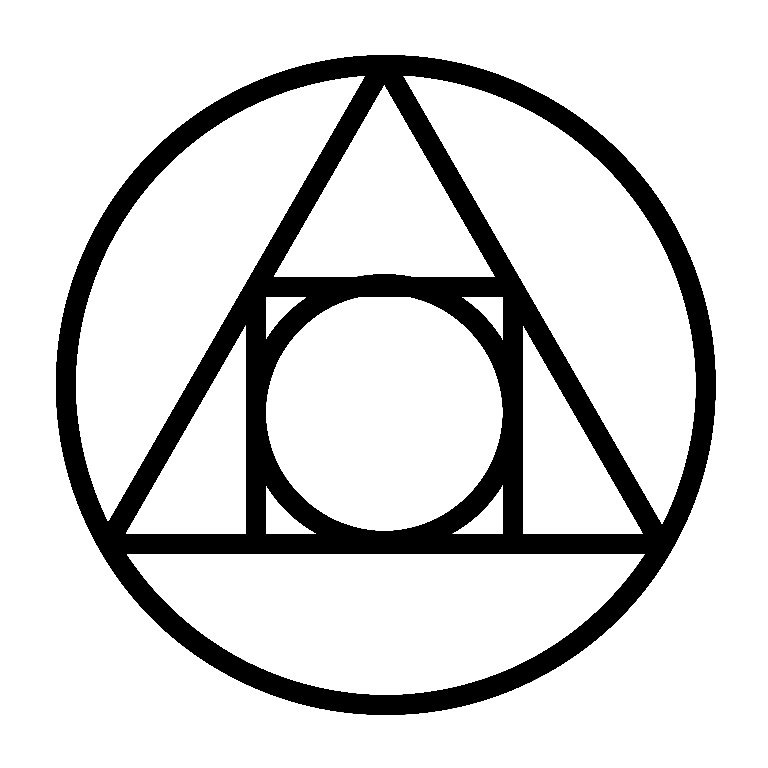The Alchemical Symbol for Air

The Alchemical Symbol for Air
Origins and Evolution
The symbol for air (△)—an upright triangle with a horizontal line through its upper third—derives from classical Greek natural philosophy, where Empedocles (5th century BCE) identified the four root elements: earth, water, air, and fire. Each was tied to qualities (hot/cold, dry/moist) and represented visually by geometric forms.
-
Fire: upward triangle (hot + dry).
-
Air: upward triangle with a line, marking hot + wet.
The addition of the horizontal bar signified the moderating moisture that differentiates air from fire.
Aristotle (4th century BCE) codified this elemental framework in Meteorologica and On Generation and Corruption, describing air as a light, mobile intermediary between fire and water. From these treatises, the triangular glyph entered late Hellenistic and Roman Hermetic diagrams, and by the Middle Ages it became standard in alchemical shorthand.
By the 12th–13th centuries, Latin alchemists such as Albertus Magnus and Roger Bacon used this symbol in marginalia to denote volatile or gaseous substances. Medieval copyists simplified its form for quick inscription—often omitting the bar when context made meaning clear.
Meaning in Alchemical Context
In alchemy, air represented volatility, spirit, and the life-carrying principle. It was linked to Mercury (the planet and metal) for its mobility and capacity to bridge heaven and earth. Early writers treated air as the vehicle of the anima mundi—the world-soul that animated all matter.
The air element corresponded to:
-
Direction: East
-
Season: Spring
-
Temperament: Sanguine (according to Galenic medicine)
-
Qualities: Hot and wet
-
Symbolic color: Yellow or pale blue
In Renaissance alchemy, Paracelsus (1493–1541) re-interpreted the four elements as tria prima—salt, sulfur, and mercury—supplemented by air as the mediating subtle body. Later Hermetic philosophers such as Robert Fludd (1617) and Michael Maier (1618) maintained air’s duality: physical vapor and spiritual breath.
Representative Texts
-
Pseudo-Geber, Summa Perfectionis (13th c.): air as “the vessel of spirit, bearing the virtues of heaven.”
-
Heinrich Khunrath, Amphitheatrum Sapientiae Aeternae (1609): portrays air within a concentric diagram where divine illumination descends through the airy sphere before reaching the laboratory furnace.
-
Robert Fludd, Utriusque Cosmi Historia (1617): depicts the alchemist’s bellows and the celestial winds as one continuum—the breath of creation.
These texts consistently associate air with purification by sublimation—the upward motion that refines matter without destroying it.
The Symbol in Use
The triangle-with-bar appeared frequently in alchemical charts, still diagrams, and marginal shorthand to indicate gaseous products, distillation vapors, or “volatile spirits.”
-
In furnace schematics, it marks the upward path of heat and vapor.
-
In elixir recipes, it denotes processes involving circulation, aeration, or volatilization.
-
In philosophical emblems, it symbolizes the spiritus vitalis—the breath animating both macrocosm and microcosm.
By the 17th century, air’s glyph was standardized in the R.A.M.S. Library and later Hermetic Order manuscripts, preceding its modern re-use in chemistry (as an arrow-like shorthand for gas or vapor).
